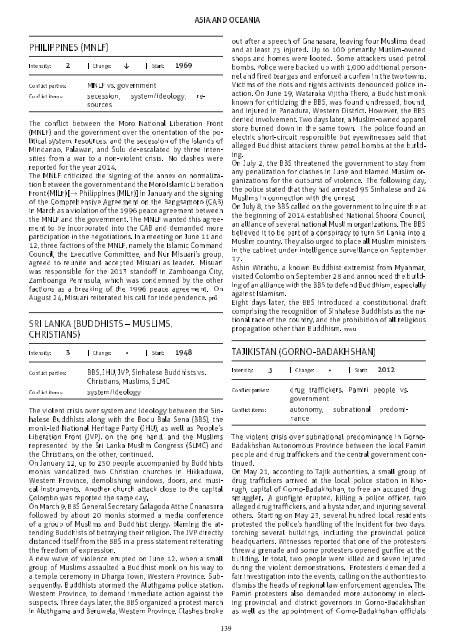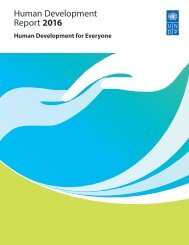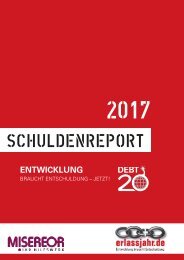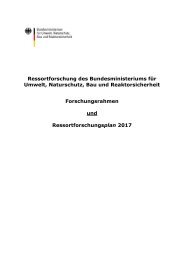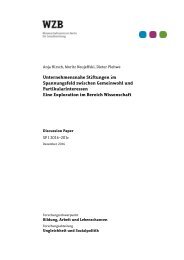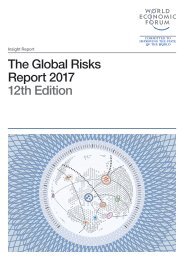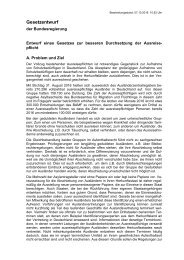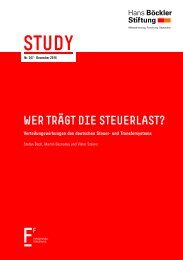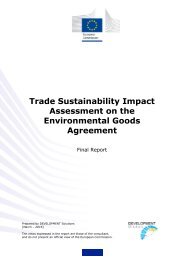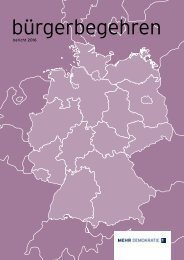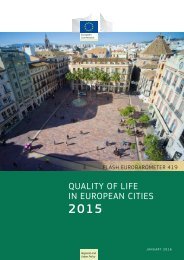79PFnGscZ
79PFnGscZ
79PFnGscZ
Create successful ePaper yourself
Turn your PDF publications into a flip-book with our unique Google optimized e-Paper software.
ASIA AND OCEANIA<br />
PHILIPPINES (MNLF)<br />
Intensity: 2 | Change: | Start: 1969<br />
Conflict parties:<br />
MNLF vs. government<br />
Conflict items: secession, system/ideology, resources<br />
The conflict between the Moro National Liberation Front<br />
(MNLF) and the government over the orientation of the political<br />
system, resources, and the secession of the islands of<br />
Mindanao, Palawan, and Sulu de-escalated by three intensities<br />
from a war to a non-violent crisis. No clashes were<br />
reported for the year 2014.<br />
The MNLF criticized the signing of the annex on normalization<br />
between the government and the Moro Islamic Liberation<br />
Front (MILF) [→ Philippines (MILF)] in January and the signing<br />
of the Comprehensive Agreement on the Bangsamoro (CAB)<br />
in March as a violation of the 1996 peace agreement between<br />
the MNLF and the government. The MNLF wanted this agreement<br />
to be incorporated into the CAB and demanded more<br />
participation in the negotiations. In a meeting on June 11 and<br />
12, three factions of the MNLF, namely the Islamic Command<br />
Council, the Executive Committee, and Nur Misuari's group,<br />
agreed to reunite and accepted Misuari as leader. Misuari<br />
was responsible for the 2013 standoff in Zamboanga City,<br />
Zamboanga Peninsula, which was condemned by the other<br />
factions as a breaking of the 1996 peace agreement. On<br />
August 24, Misuari reiterated his call for independence. prü<br />
SRI LANKA (BUDDHISTS MUSLIMS,<br />
CHRISTIANS)<br />
Intensity: 3 | Change: | Start: 1948<br />
Conflict parties:<br />
Conflict items:<br />
BBS, JHU, JVP, Sinhalese Buddhists vs.<br />
Christians, Muslims, SLMC<br />
system/ideology<br />
The violent crisis over system and ideology between the Sinhalese<br />
Buddhists along with the Bodu Bala Sena (BBS), the<br />
monk-led National Heritage Party (JHU), as well as People's<br />
Liberation Front (JVP), on the one hand, and the Muslims<br />
represented by the Sri Lanka Muslim Congress (SLMC) and<br />
the Christians, on the other, continued.<br />
On January 12, up to 250 people accompanied by Buddhists<br />
monks vandalized two Christian churches in Hikkaduwa,<br />
Western Province, demolishing windows, doors, and musical<br />
instruments. Another church attack close to the capital<br />
Colombo was reported the same day.<br />
On March 9, BBS General Secretary Galagoda Atthe Gnanasara<br />
followed by about 20 monks stormed a media conference<br />
of a group of Muslims and Buddhist clergy, blaming the attending<br />
Buddhists of betraying their religion. The JVP directly<br />
distanced itself from the BBS in a press statement reiterating<br />
the freedom of expression.<br />
A new wave of violence erupted on June 12, when a small<br />
group of Muslims assaulted a Buddhist monk on his way to<br />
a temple ceremony in Dharga Town, Western Province. Subsequently,<br />
Buddhists stormed the Aluthgama police station,<br />
Western Province, to demand immediate action against the<br />
suspects. Three days later, the BBS organized a protest march<br />
in Aluthgama and Beruwela, Western Province. Clashes broke<br />
out after a speech of Gnanasara, leaving four Muslims dead<br />
and at least 75 injured. Up to 100 primarily Muslim-owned<br />
shops and homes were looted. Some attackers used petrol<br />
bombs. Police were backed up with 1,000 additional personnel<br />
and fired tear gas and enforced a curfew in the two towns.<br />
Victims of the riots and rights activists denounced police inaction.<br />
On June 19, Wataraka Vijitha Thero, a Buddhist monk<br />
known for criticizing the BBS, was found undressed, bound,<br />
and injured in Panadura, Western District. However, the BBS<br />
denied involvement. Two days later, a Muslim-owned apparel<br />
store burned down in the same town. The police found an<br />
electric short-circuit responsible but eyewitnesses said that<br />
alleged Buddhist attackers threw petrol bombs at the building.<br />
On July 2, the BBS threatened the government to stay from<br />
any penalization for clashes in June and blamed Muslim organizations<br />
for the outburst of violence. The following day,<br />
the police stated that they had arrested 95 Sinhalese and 24<br />
Muslims in connection with the unrest.<br />
On July 8, the BBS called on the government to inquire the at<br />
the beginning of 2014 established National Shoora Council,<br />
an alliance of several national Muslim organizations. The BBS<br />
believed it to be part of a conspiracy to turn Sri Lanka into a<br />
Muslim country. They also urged to place all Muslim ministers<br />
in the cabinet under intelligence surveillance on September<br />
17.<br />
Ashin Wirathu, a known Buddhist extremist from Myanmar,<br />
visited Colombo on September 28 and announced the building<br />
of an alliance with the BBS to defend Buddhism, especially<br />
against Islamism.<br />
Eight days later, the BBS introduced a constitutional draft<br />
comprising the recognition of Sinhalese Buddhists as the national<br />
race of the country, and the prohibition of all religious<br />
propagation other than Buddhism. mwu<br />
TAJIKISTAN (GORNO-BADAKHSHAN)<br />
Intensity: 3 | Change: | Start: 2012<br />
Conflict parties: drug traffickers, Pamiri people vs.<br />
government<br />
Conflict items: autonomy, subnational predominance<br />
The violent crisis over subnational predominance in Gorno-<br />
Badakhshan Autonomous Province between the local Pamiri<br />
people and drug traffickers and the central government continued.<br />
On May 21, according to Tajik authorities, a small group of<br />
drug traffickers arrived at the local police station in Khorugh,<br />
capital of Gorno-Badakhshan, to free an accused drug<br />
smuggler. A gunfight erupted, killing a police officer, two<br />
alleged drug traffickers, and a bystander, and injuring several<br />
others. Starting on May 23, several hundred local residents<br />
protested the police's handling of the incident for two days,<br />
torching several buildings, including the provincial police<br />
headquarters. Witnesses reported that one of the protesters<br />
threw a grenade and some protesters opened gunfire at the<br />
building. In total, two people were killed and seven injured<br />
during the violent demonstrations. Protesters demanded a<br />
fair investigation into the events, calling on the authorities to<br />
dismiss the heads of regional law enforcement agencies. The<br />
Pamiri protesters also demanded more autonomy in electing<br />
provincial and district governors in Gorno-Badakhshan<br />
as well as the appointment of Gorno-Badakhshan officials<br />
139


